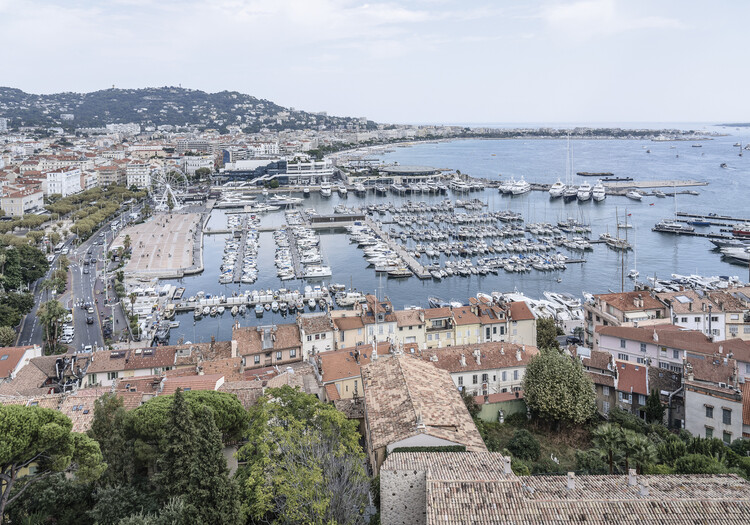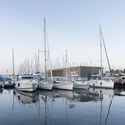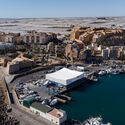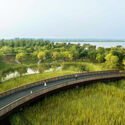 New Services For Boaters On The Port Of Cannes / Heams et Michel. Image © Aldo Amoretti
New Services For Boaters On The Port Of Cannes / Heams et Michel. Image © Aldo Amoretti
Share
Or
https://www.archdaily.com/1032756/why-sit-by-the-dock-of-the-bay-designing-thresholds-to-the-water
Boat docks and harbors are liminal spaces where the shore marks the meeting of land and water, and serve as a space for the convergence of culture, industry, and community. For those who work at sea, from commercial fishers to marine freight operators, the dock is a threshold between labor and rest, between oceanic uncertainty and terrestrial stability. For others, the dock serves as a gateway to recreation, sport, and adventure, accommodating everything from rowing clubs to family sailing trips. And for many who never board a vessel, the dock offers a powerful connection to the marine environment where one can pause, observe, and engage with the rhythmic tides.
Across the world, docks take on architectural and cultural forms as diverse as the communities they serve. In working harbors, function dominates, with robust infrastructure tailored to industrial needs and little attention paid to leisure or aesthetics. By contrast, civic and recreational harbors are often designed with public access and cultural programming in mind, incorporating promenades, educational centers, and landscaping that supports and reflects ecological and social vitality. The history of each place, shaped by commerce, colonization, environmental change, or cultural ritual, leaves an imprint on the design choices and evolution of the waterfront.






